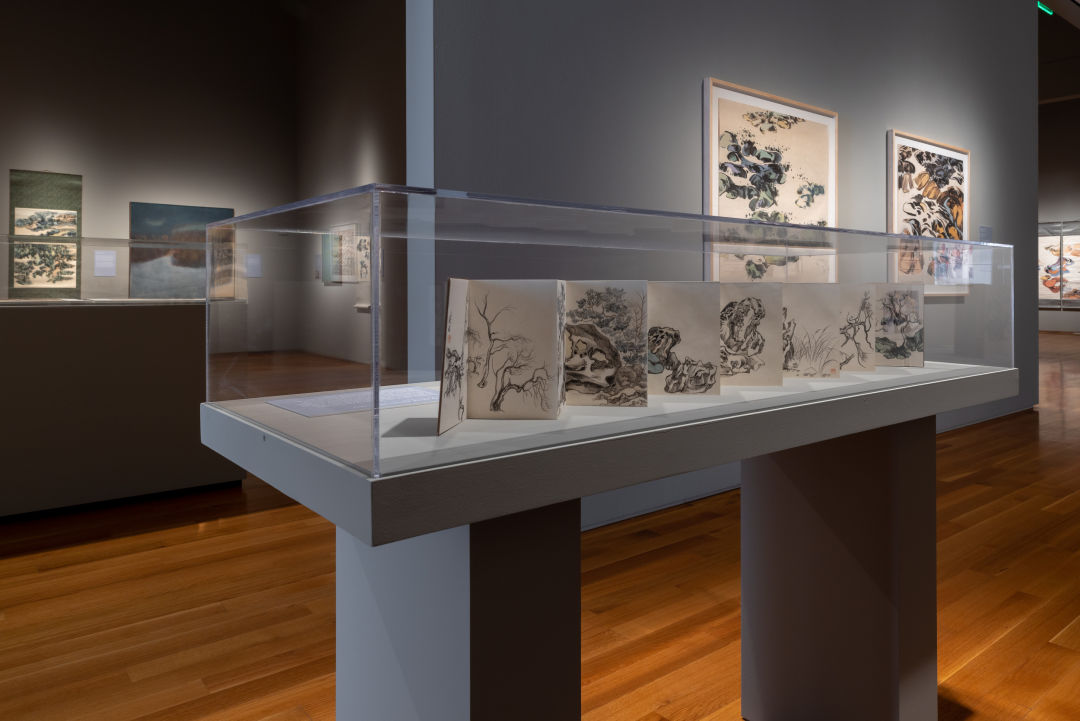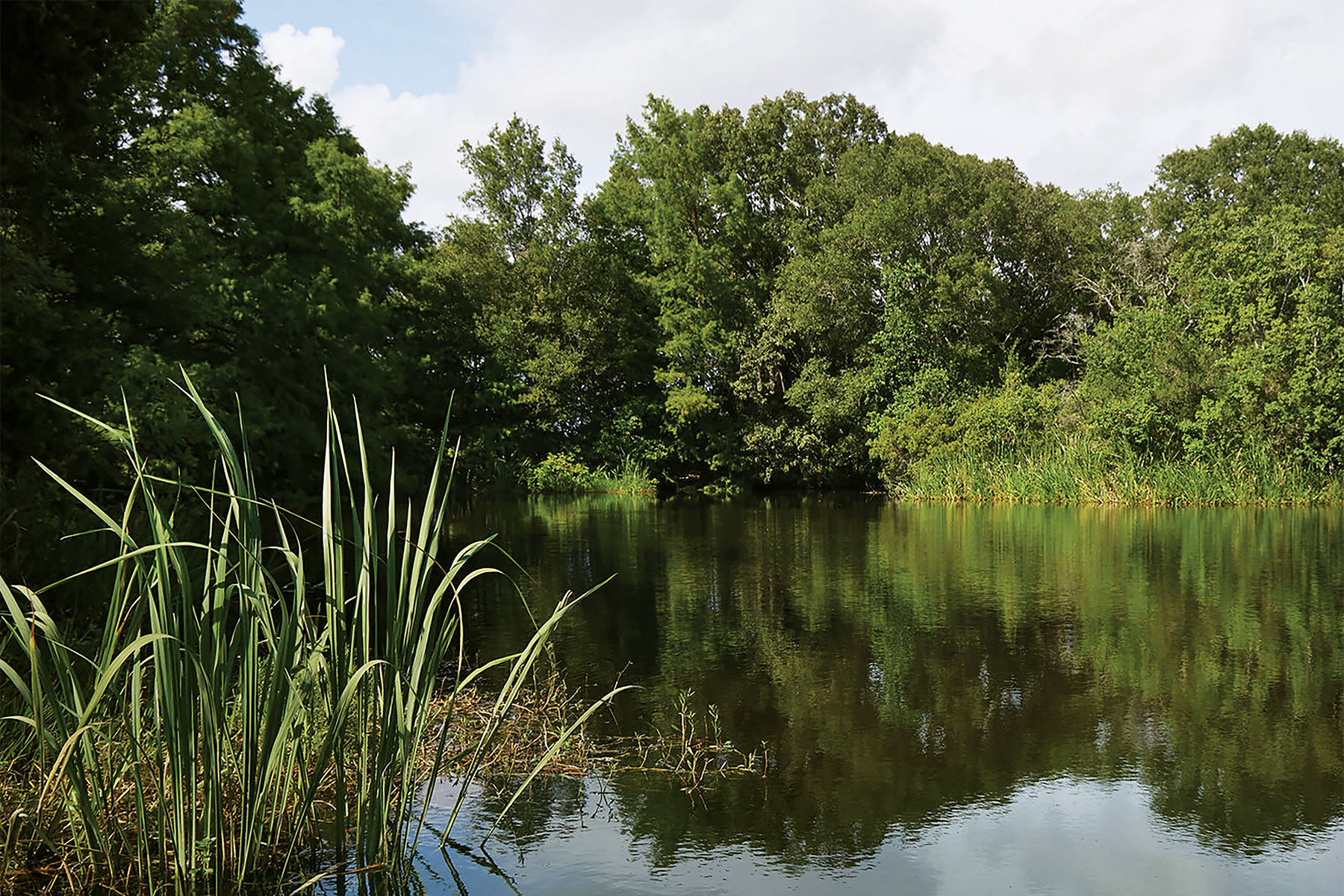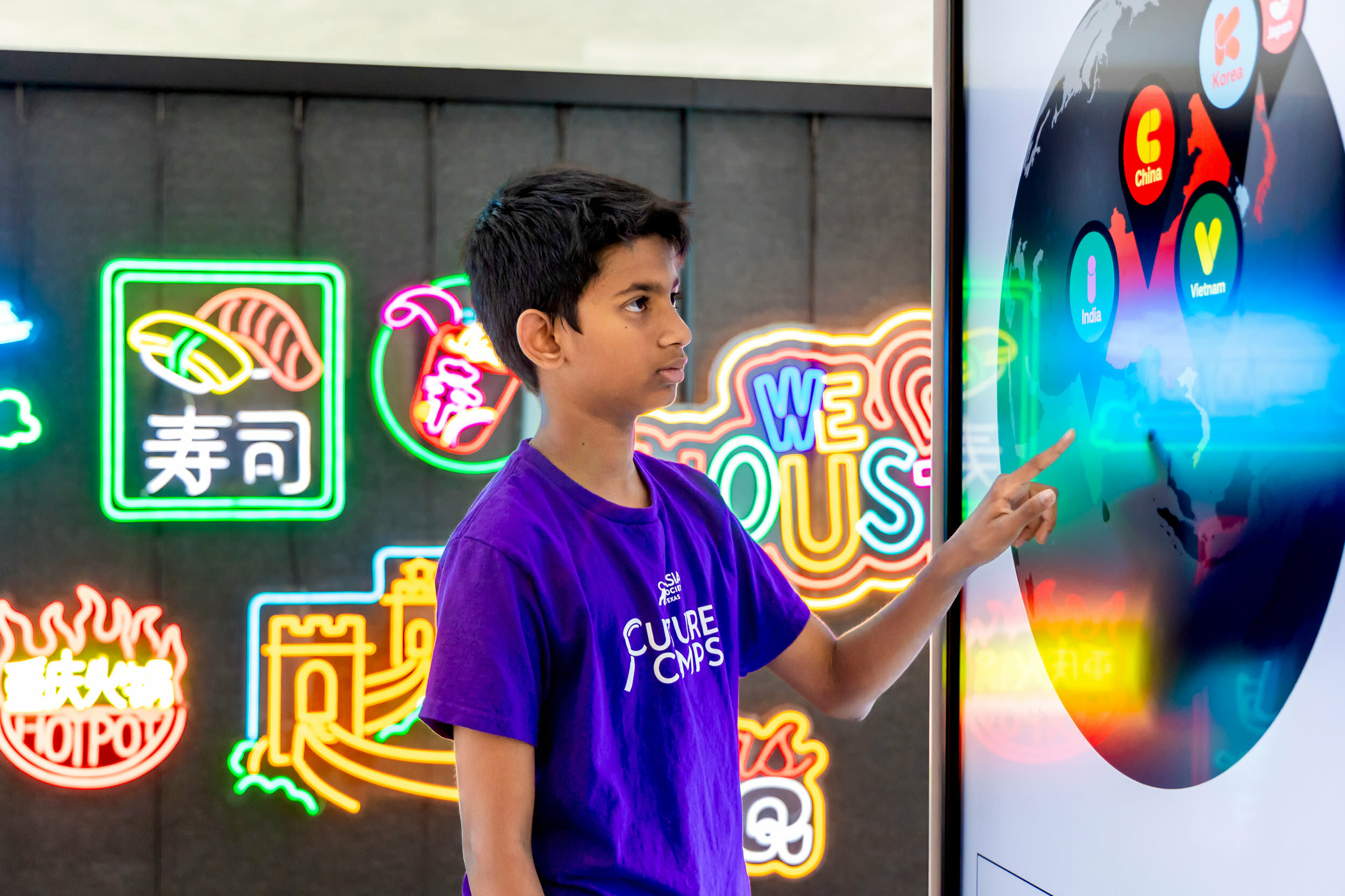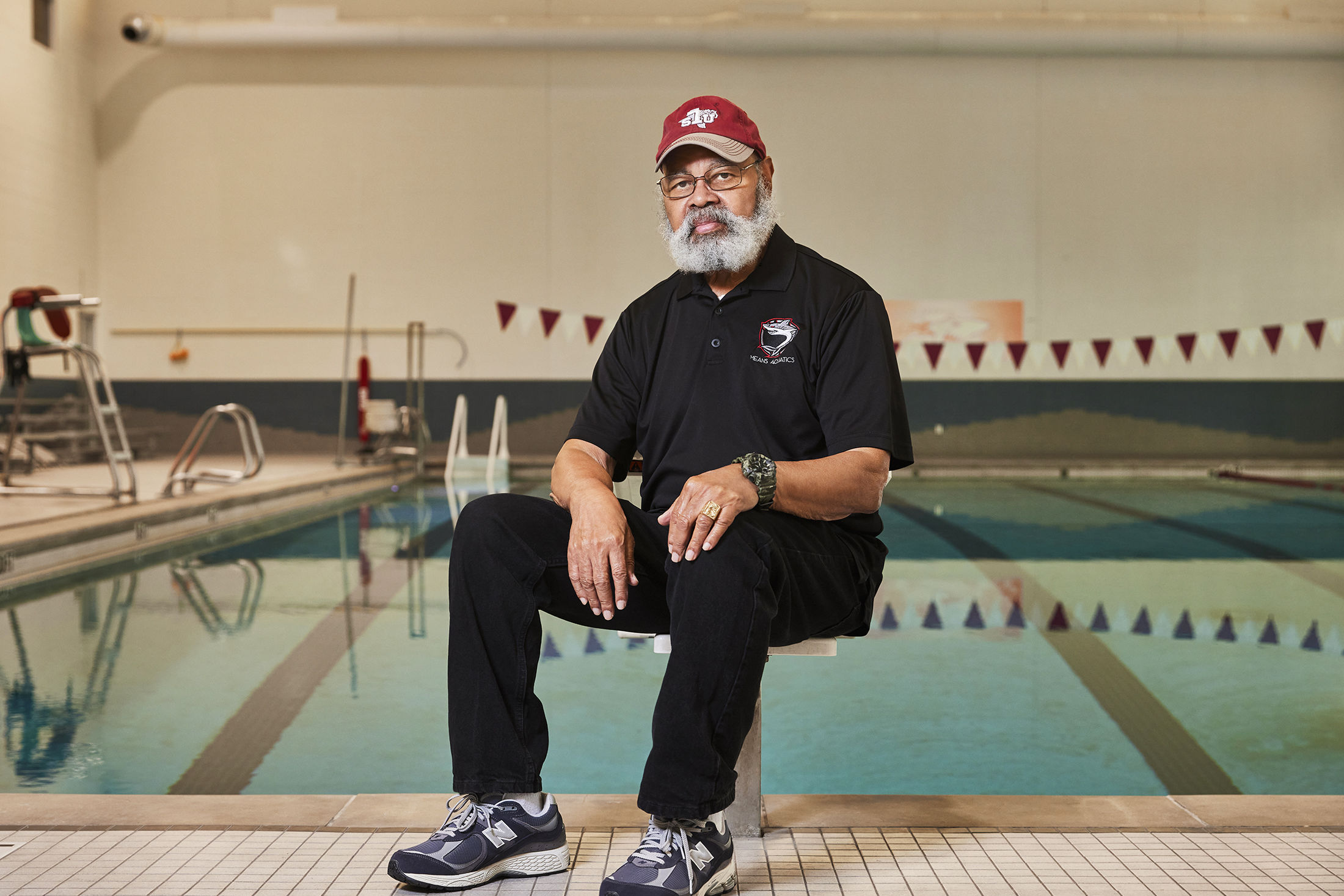Pioneering Chinese American Artist Gets Long-Overdue Retrospective

Blue and white fade into each other along rounded crags. The snow creates a hazy barrier across the horizon, but it’s still possible to make out enough details of the terrain ahead. Hung Hsien, who goes by Margaret Chang socially, painted her Snowscape in 1985, a year after she and her architect husband, T.C., moved to Houston from Hong Kong. She obviously didn’t craft this scene from her life in Texas, but she also didn’t use references from other places, either.
“I paint from my mind. Nothing to do with the outside,” Hsien says.
Born in Yangzhou in 1933, the artist is the subject of her first-ever retrospective at Asia Society Texas. Hung Hsien: Between Worlds opened April 16 and runs through September 21. Next year, it will go on display at the Asia Society in Hong Kong as the first exhibition the two institutions have shared. Lead curator and art historian Dr. Tiffany Wai-Ying Beres, along with curators Dr. Einor Cervone of the Denver Art Museum and Asia Society Texas’s own Owen Duffy, have crafted a comprehensive journey exploring the incredible arcs of Hsien’s ongoing career.
“When I was a little girl, I already loved to paint. One time I did a big piece on the wall, with Mickey Mouse. I did that one first, then I added the landscape to finish the whole painting,” Hsien says. “It was a big, big piece. I put it in my room. My father came over. He looked at it for quite a while. He said, ‘Pretty good. Pretty good.’”

This passion for art never faltered as she grew older. While an art student at National Taiwan Normal University in Taipei, she simultaneously took private art lessons under Master Puru, the cousin of the last emperor of China, Puyi. He served as a court painter before moving to Taiwan following the 1911 Revolution. But Hsien doesn’t exactly view Master Puru as merely an art teacher.
“He didn’t really teach you what to do. He really taught you to be a person. He said that that’s more important than to paint. If you are not a good person, it will show in your painting,” she says.
At the time, traditional Chinese painting was taught by and large via copying. Students learned how to craft the curving lines and careful strokes from repeating what came before, building an understanding of how ink pools and bleeds when a brush is pressed too tightly to the paper. Hsien duplicated Master Puru’s own works, as well as those by previous court painters and other influential Chinese artists.
After completing her studies in Taipei, she moved to Evanston, Illinois, for her MFA at Northwestern University. Hsien learned how to paint in European and American styles during her undergraduate work, but it was her time in and near Chicago when the characteristics of abstract expressionism begin to show themselves in her paintings. She’d absorb herself in the impressionist collection at the Art Institute of Chicago and took a job at the Mori Gallery, where she enjoyed studying Japanese ukiyo-e (woodblock prints).

“It feels free…not to do the traditional way to do the painting,” Hsien says.
During this period, she retained the linework of her Master Puru training while still experimenting with more colors and more free-flowing, nonrepresentational forms. Her merging of traditional Chinese painting with the bold expressiveness of Jackson Pollock and Mark Rothko caught the attention of the Fifth Moon Group. The artist collective, which formed at Hsien’s alma mater National Taiwan Normal University, was similarly interested in creatively connecting past with present, Asia with America. They just happened upon the same concepts independently of one another.
“Margaret’s work was part of this incredibly important dialog happening in the 1960s and ’70s in Taiwan, but it had a much larger resonance with the larger Chinese diaspora happening at the time,” Duffy says. “Margaret arrived at her distinct style on her own. She wasn’t necessarily ‘influenced,’ and I’m using my quotation marks around that, by other artists that might be more well-known internationally.”
Hsien continued her explorations while teaching in Evanston, then in Hong Kong, and later in Houston. Beach Rocks II, from 1980, masterfully showcases the hallmarks of her oeuvre: natural landscapes populated by dreamlike forms, delicate lines interspersed with bold blots of black ink, and the thoughtful incorporation of white space. And don’t call it negative space.
“She doesn’t see it as emptiness. It really is a play and very important, and oftentimes will have a shape of its own,” says Dr. B U.K. Li, emeritus professor of pediatrics at the Medical College of Wisconsin in Milwaukee and a longtime friend of Hsien’s who contributed research to Between Worlds. “I love that yin-yang. It really follows the Tao. There’s this balance between form and formlessness. She’s remarkable.”

The retrospective also features pieces of driftwood and large, pockmarked rocks from Hsien’s personal collection. She spent the summers between 1974 and 1977 on Hornby Island off the coast of British Columbia, Canada. Between Worlds features two albums collecting her drawings of driftwood and trees. While she found inspiration in the gnarled, windswept environment surrounding her, Hsien’s works don’t reference real scenes or pieces of beachside ephemera. Their shapes kickstart her imagination and allow her to sink into the reveries that become the final pieces.
“In that moment, I’m actually inside of the painting. Sometimes I even do not know about the real world,” Hsien says.
Dr. Li mentions “qi” as the flow and force driving her artistic vision. The concept of qi is more complex than merely referring to it as a soul or a life force, since there isn’t a direct analog in the English language. But as a practitioner of tai chi who once taught classes at the Jung Center in Houston’s Museum District, it’s certainly a major foundational element of Hsien’s artistic process.
“They often use a term in Chinese: ‘landscapes of the mind,’” Dr. Li says. “Margaret’s art is less about observation or environmental impact shaping her work, and it’s much more for her manifestation of her energy… When she was painting, she was in a zenlike state, almost oblivious. Never started from a sketch. It just all came from the heart. So I think it’s fair to say somehow she learned how to channel her qi in a very direct way onto paper. And how she did that, I don’t think she even knows.”

An essay collection will also accompany Between Worlds. Set for publication this summer, it makes Hsien’s compelling life more accessible to art and art history fans in Houston and beyond. She occupies such a unique niche in the overall story of art, her legacy deserves to spread beyond the first retrospective to bear her name.
“Even though she’s here in Houston, I think her journey is, like many, including my parents, a diasporic journey from mainland China. She had to move multiple times because of the Japanese, the communists. Ended up in Taiwan, came to the US. How do you find your identity?” Dr. Li says. “You are Chinese, but you are in the US. How do you synthesize that? And I think it’s a beautiful example of how she’s been able to do this.”




